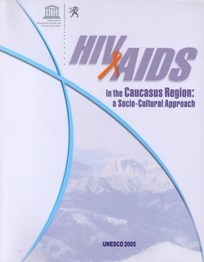Caucasus: "Culturally Appropriate IEC for HIV Prevention in the three Caucasus countries: Armenia, Azerbaijan and Georgia"

Armenia, Azerbaijan and Georgia share various social, economic, political and cultural traits that make it difficult to address the issue of HIV and AIDS in appropriate ways.
The UNESCO-Flemish government joint project ‘Culturally Appropriate Information, Education, Communication for HIV Prevention in the Three Caucasus Countries’ aims to assist these Member States in analysing relevant socio-cultural issues and in the development of relevant and sustainable responses to the HIV epidemic.
The project is conceived in two phases: the first, research-oriented phase (January 2004-June 2005) aimed at the identification of the socio-cultural issues influencing the spread of HIV, such as traditions, beliefs, religions, ways of life, gender norms and practices.
The second phase of the project (August 2005 – March 2006) used the research findings as a basis for development of culturally appropriate education materials and training of trainers in this field.
The results of the first research-oriented phase of the project have been published and are available on–line in the following documents:
- “HIV and AIDS in the Caucasus Region: A Socio-Cultural Approach” (ENGLISH and RUSSIAN )
- “HIV and AIDS in Armenia: A Socio-Cultural Approach” (ENGLISH RUSSIAN ARMENIAN)
- “HIV and AIDS in Azerbaijan: A Socio-Cultural Approach” ((ENGLISH (RUSSIAN (AZERI)
- “HIV and AIDS in Georgia: A Socio-Cultural Approach” ((ENGLISH&GEORGIAN; (RUSSIAN)
The second phase of the project is now in progress and will focus on specific interventions based on the research results found in the above publications.
- Start date: 11-01-2004 End date: 11-03-2006
- Helena Drobna
- h.drobna@unesco.org
- © UNESCO - Caucasus: "Culturally Appropriate IEC for HIV Prevention in the three Caucasus countries: Armenia, Azerbaijan and Georgia"


